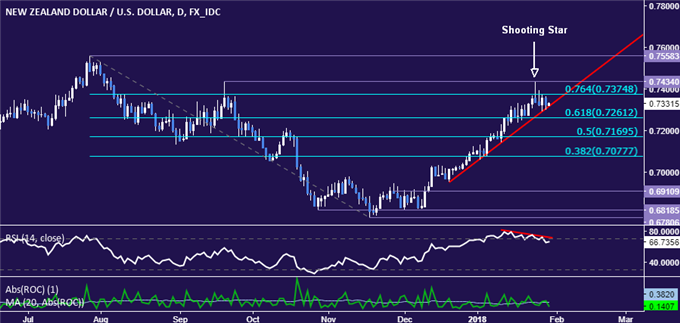To receive Ilya's analysis directly via email, please SIGN UP HERE
Talking Points:
- NZD/USD Technical Strategy: Flat
- Kiwi Dollar topping signs continue to build as prices test key trend line
- Entering short still seemingly premature absent clear-cut confirmation
The New Zealand Dollar continues to show signs of topping against its US counterpart despite having touched the highest level in nearly six months. The currency’s latest upside foray was undone by disappointing CPI data, forming a Shooting Star candlestick. Negative RSI divergence bolsters the case for a downturn.
A break below the 61.8% Fibonacci retracement at 0.7261 would also take out near-term trend line support, signaling a downward reversal is in progress and exposing the 50% level at 0.7170. Alternatively, daily close above the 76.4% Fib at 0.7375 opens the door for another challenge of 0.7434 (September 20 high).
While the case for topping has strengthened over the past week, confirmation remains elusive. The immediate trajectory is still defined by a series of higher highs and lows, leaving open the possibility that sideways consolidation will give way to another upward push and warning against entering short.
Find out here what the #1 mistake that traders make is and how you can fix it!







